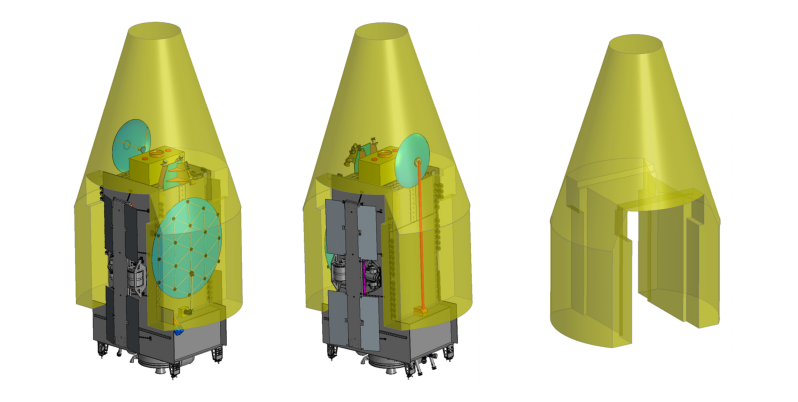In an unusual turn of events, Lockheed Martin has released technical “payload accommodation information” for three of their satellite busses. In layperson’s terms, if you wanted to build a satellite and weren’t sure what guidelines to follow these documents may help you learn if Lockheed Martin has a platform to help you build it.
An opportunity to check out once-confidential information about satellites sounds  like a perfect excuse to dig through some juicy documentation, though unfortunately this may not be the bonanza of technical tidbits the Hackaday reader is looking for. Past the slick diagrams of typical satellites in rocket fairings, the three documents in question primarily provide broad guidance. There are notes about maximum power ratings, mass and volume guidelines, available orbits, and the like. Communication bus options are varied; there aren’t 1000BASE-T Ethernet drops but multiply redundant MIL-STD-1553B might come standard, plus telemetry options for analog, serial, and other data sources up to 100 Mbps. Somewhat more usual (compared to your average PIC32 datasheet) are specifications for radiation shielding and it’s effectiveness.
like a perfect excuse to dig through some juicy documentation, though unfortunately this may not be the bonanza of technical tidbits the Hackaday reader is looking for. Past the slick diagrams of typical satellites in rocket fairings, the three documents in question primarily provide broad guidance. There are notes about maximum power ratings, mass and volume guidelines, available orbits, and the like. Communication bus options are varied; there aren’t 1000BASE-T Ethernet drops but multiply redundant MIL-STD-1553B might come standard, plus telemetry options for analog, serial, and other data sources up to 100 Mbps. Somewhat more usual (compared to your average PIC32 datasheet) are specifications for radiation shielding and it’s effectiveness.
In the press release EVP [Rick Ambrose] says “we’re sharing details about the kinds of payloads we can fly…” and that’s exactly what these documents give us. Physical ballpark and general guidelines about what general types of thing Lockheed has capability to build launch. Hopefully the spirit of openness will lead to the hoped-for increase in space utilization.
If you take Lockheed up on their offer of satellite development, don’t forget to drop us a tip!
[Via the Washington Post]















It’s interesting to see the old-school players trying to react to companies like SpaceX fundamentally changing the space game.
With the cheap (relatively) and regular access to LEO offered by a reusable Falcon 9, there’s going to be more satellites going into orbit that any time in human history. If Lockheed wants a piece of that pie, they need to make it as easy as possible to use one of their spacecraft buses.
SpaceX published (probably outdated) revision 2 of there Falcon 9 User Guide in 2015:
http://www.spacex.com/sites/spacex/files/falcon_9_users_guide_rev_2.0.pdf
The Falcon Heavy User Guide is not available yet, so you will have to ask for details if your over weight cubesat ends up exceeding 20t.
But what they changed (so fundamentally)? Arianespace have started back in 80. Soyuz, Ariane 5 and other rockets documentation was available, now u can download PDF from internet. Not to mention that Soyuz launch price is comparable to Falcon 9.
Soyuz? Are you sure about that? Soyuz is (now) for humans and cargo to the ISS, didn’t you mean the Proton?
Soyuz the rocket and Soyuz the spacecraft are not the same thing. Kokos is correct. I’m surprised you know what a Proton is but don’t know this.
Even cheaper, a VEGA flight will put your payload anywhere you want and you’ll have the privilege to use an 100% reliable launcher.
Agreed. I had to sign away all of my rights and get clearance in order to view these documents back in 2011.
If you’re expecting much in terms of these released Launch Accommodation Specifications, don’t. What you’ll get is a really dumbed-down “brochure” about the bare minimums. But that’s OK, it’s better than nothing :-)
When I saw the tip title I was definitely excited for a hyper technical dump of a bunch of esoteric facts. In hindsight, this makes much more sense for them :)
There is a bus missing from this spec sheet, but not really surprising.
Reasons the Hackaday readers are awesome #48: The ability to spot check satellite brochures and spot missing information.
I believe that I’ve seen Arianne (ESA) payload guidelines few years ago. This is not entirely news for the rest of the world. This type of data is closed source only in US I guess